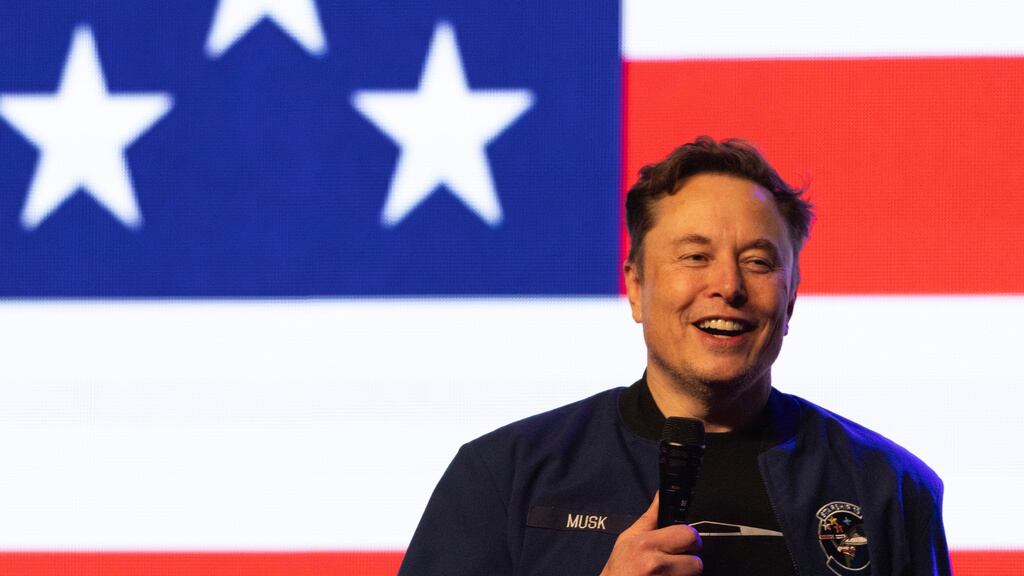The days of the Department of Government Efficiency, DOGE, seem to be numbered. Elon Musk recently suggested that he will soon end his work as the second most powerful man in the White House and Donald Trump told reporters that “at some point, he will come back” to run his companies.
PUBLICIDAD
Trump also said that DOGE “will come to an end.”
PUBLICIDAD
All that speech took place before Musk faced a tough defeat on Tuesday in Wisconsin, where voters rejected his conservative candidate for the state Supreme Court despite over 21 million dollars in personal donations, dressing up as a Green Bay Packers fan (with a “cheesehead”) and his presence at a campaign event over the weekend.
There are also more problems for the billionaire entrepreneur in Tesla, his electric vehicle manufacturer, which reported a 13% drop in sales in the first three months of the year due to the rejection of Elon Musk’s political activism.
When will Elon Musk leave Washington?
The White House has not revealed a clear schedule to close the DOGE, and it was never planned for the cost reduction government organization to become a permanent element in Washington. But it could be coming to a conclusion faster than anticipated. The DOGE was originally designed to operate until July 4, 2026.
Now, there are signs that it is already being dismantled. DOGE employees have been transferred to various federal agencies, which are supposed to lead the cost reduction. Layoffs are taking place throughout the government to achieve some of the goals set by Musk and Trump.
“We believe that probably in the next two or three months, we will be quite satisfied with the people who are working hard and want to be members of the government,” expressed Trump last week.
The possible end of DOGE does not mean that Trump will stop shaking Washington. But it seems that the government’s efforts will enter a new phase that will be less focused on Musk, whose work as a presidential advisor made him a political lightning rod.
Initially, DOGE was conceived as an independent advisory panel, with Musk sharing leadership with Vivek Ramaswamy, a biotech entrepreneur. Ramaswamy stepped down and is now running for governor of Ohio, and DOGE became part of the government. It was made up of Musk’s allies, who were sent through the bureaucracy to cancel contracts, access sensitive data, and push for cuts.
And supposedly, there is a countdown clock for Musk’s tenure. He was hired as a special government employee, which means he can only work 130 days in a 365-day period.
“I think we will have achieved most of the work needed to reduce the deficit by a trillion dollars within that timeframe,” Musk told Fox News’ Bret Baier on March 27. So far, DOGE is well below that target, according to his own calculations, which have been criticized for being inflated and inaccurate."
Musk did not commit to leaving the government on a specific date, and it is not clear how the government keeps track of Musk’s time. May 30 will mark 130 days since Trump took office on January 20.
Trump told reporters on Monday in the Oval Office that he would keep him “as long as he could” and that “he is a very talented guy.” “I think he is amazing, but I also think he has a big company to run,” Trump added. “So, at some point, he will come back.”
Trump is not convinced about DOGE
When asked if DOGE will continue without Musk, Trump was evasive. He pointed out that cabinet officials have worked closely with Musk and may keep some of the department’s personnel in their agencies.
“But at some point I believe it will come to an end,” stated Trump.
Musk’s popularity numbers are behind Trump’s, something that Democrats believe they could use to their advantage in Wisconsin.
Susan Crawford defeated Brad Schimel, who had the support of Musk, by more than 10 percentage points and secured the liberal majority of the state Supreme Court.
In the final days of that campaign, Musk described the contest as “important for the future of civilization.”
